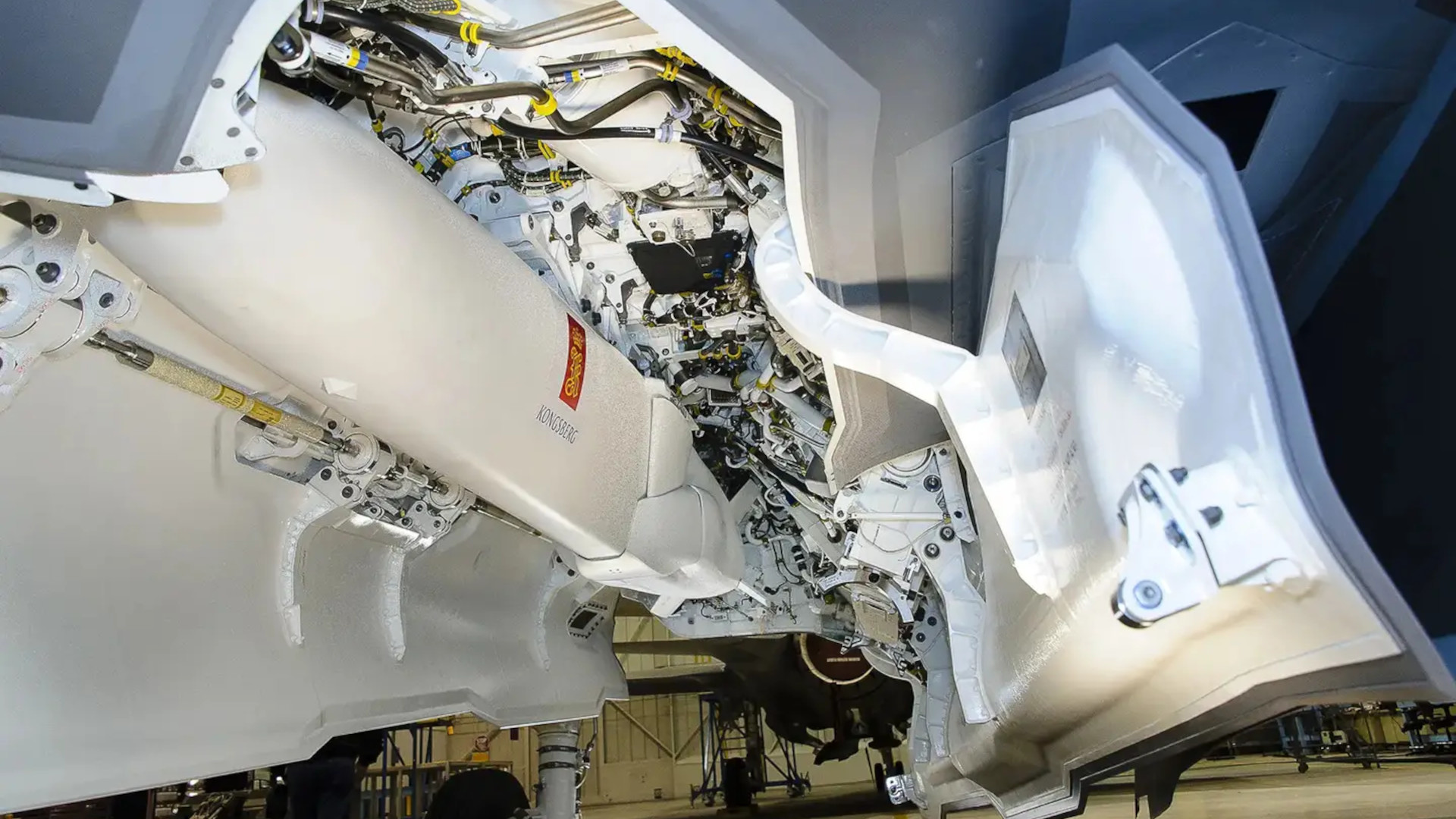The U.S. Air Force has inked its first contract for Joint Strike Missile (JSM) cruise missiles. The Norwegian-made missiles are ostensibly intended to give the service’s F-35As an interim stand-off anti-ship capability until the jets get the larger AGM-158C Long-Range Anti-Ship Missile (LRASM). However, the JSMs can also engage targets on land and will be able to fit inside the F-35A’s internal weapon bays, allowing the jets to employ these weapons while staying as stealthy as possible.
The Pentagon announced the Air Force’s award of the JSM production Lot 1 contract, which is a fixed-price deal with Norway’s Kongsberg Defence valued at $141,000,000, earlier today.
“This contract provides for all up rounds, containers, and test equipment for the Joint Strike Missile,” according to the Pentagon’s daily contracting announcement. “Work will be performed in Kongsberg, Norway, and is expected to be completed by August 31, 2026.”

How many missiles the Air Force is expecting to receive through this contract, which could have multiple options, is unclear. The service has said in the past that it was planning to buy 48 JSMs in Lot 1 and that it could acquire up to 268 of them in total.
JSM is an enlarged air-launched derivative of the sea and ground-launched Naval Strike Missile (NSM), which has been steadily growing in popularity, including in the U.S. military. The JSM, which Kongsberg developed in cooperation with U.S. defense contractor Raytheon (as they also did with NSM), has a stated maximum range of around 350 miles. This is cut roughly in half when the missile is employed in its low-altitude penetration mode.
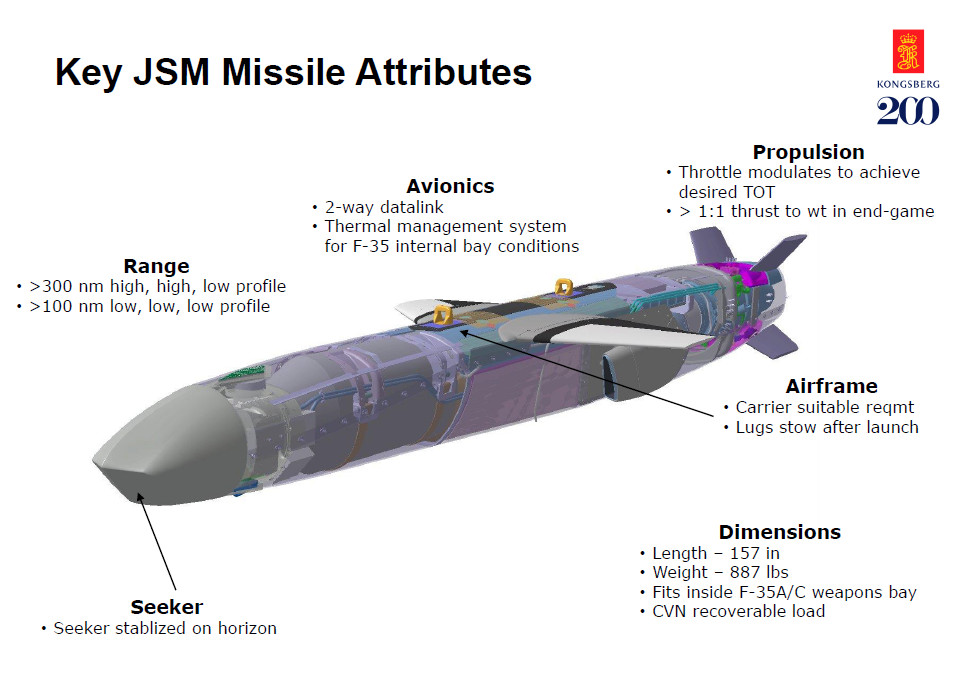
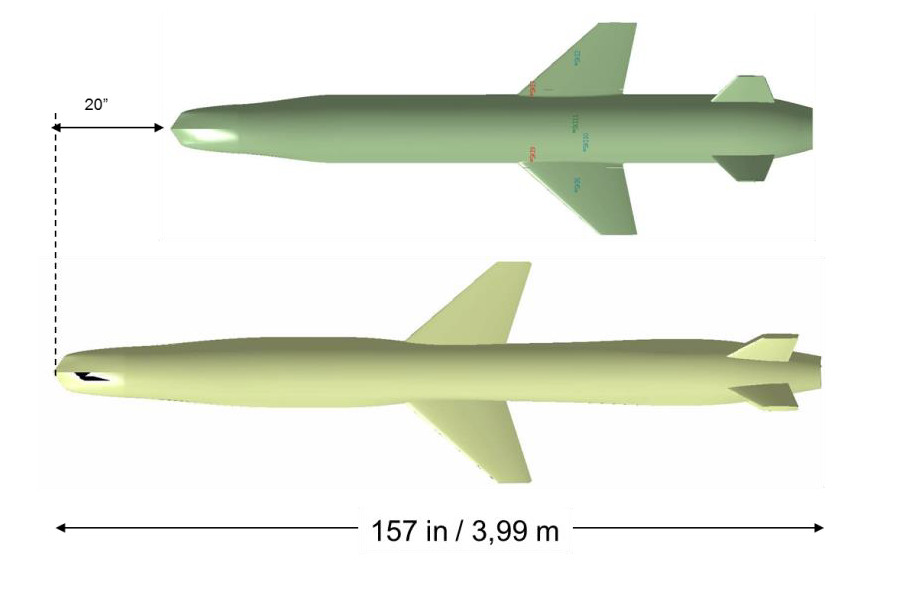
The JSM, which has a 260-pound warhead, can use GPS, INS, or terrain mapping to navigate its way to a designated target area. The terrain mapping component of the guidance suite gives the missile a valuable additional way to get where it is going even in GPS-denied environments – something that the war in Ukraine has shown is an ever-more likely possibility in future conflicts.
The agile JSM, which has reduced signature (stealthy) features, also has an imaging infrared seeker giving it very precise targeting capability in the terminal phase of flight. The seeker works passively, which also makes it immune to radiofrequency jamming and detection.
A two-way datalink means JSMs can receive additional targeting information during the mid-course portion of their flight, or be re-tasked entirely.

As already noted, the JSM is sized to fit inside the internal weapon bays of F-35A Joint Strike Fighters. As a result, it can also be carried internally on the larger carrier-based F-35C variant, which the U.S. Navy and Marine Corps operate. The internal bays on the F-35Bs that the Marine Corps also flies are smaller than those on the A and C versions, and can not accommodate the JSM.
Kongsberg has also conducted fit checks that have demonstrated the ability of the F-16 Viper, F/A-18E/F Super Hornet, and F-15E Strike Eagle, as well as the F-35A, B and C, to carry JSMs externally. In the case of the F-35 variants, this would negatively impact their stealthy characteristics.
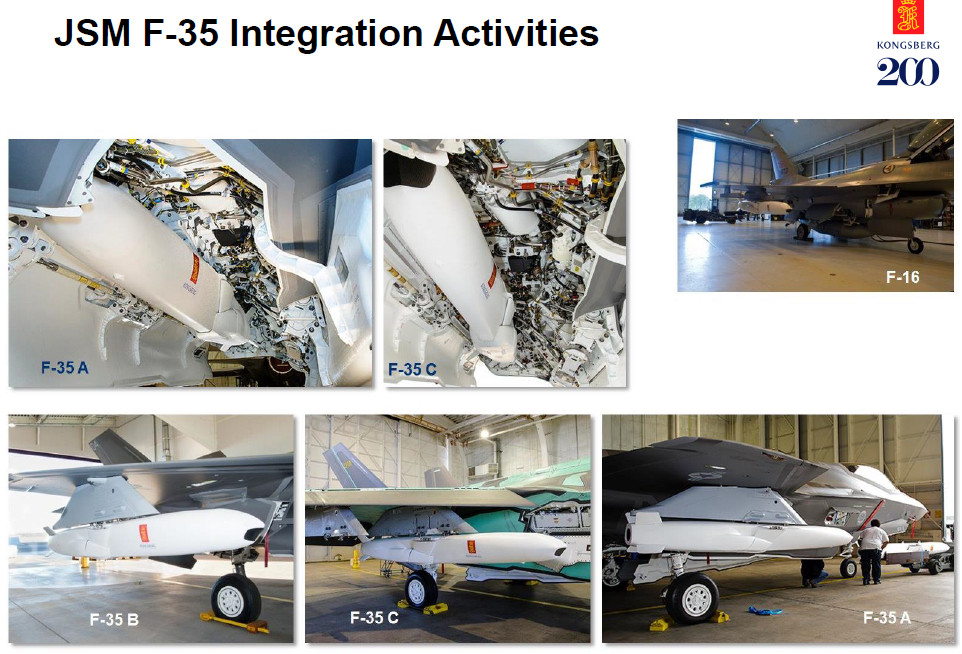
For the Air Force, the biggest benefit of the JSM may be that the missile itself has already been developed and the Royal Norwegian Air Force has been funding its integration onto the F-35A. The Air Force has already been helping with the development and integration work in support of its partners in Norway, as well.
“[The Air Force] JSM [program] will leverage the RNoAF test and integration efforts,” the service’s 2025 Fiscal Year budget request notes. “Additionally, JSM will perform the USAF specific test and integration, regression, and qualification activities.”
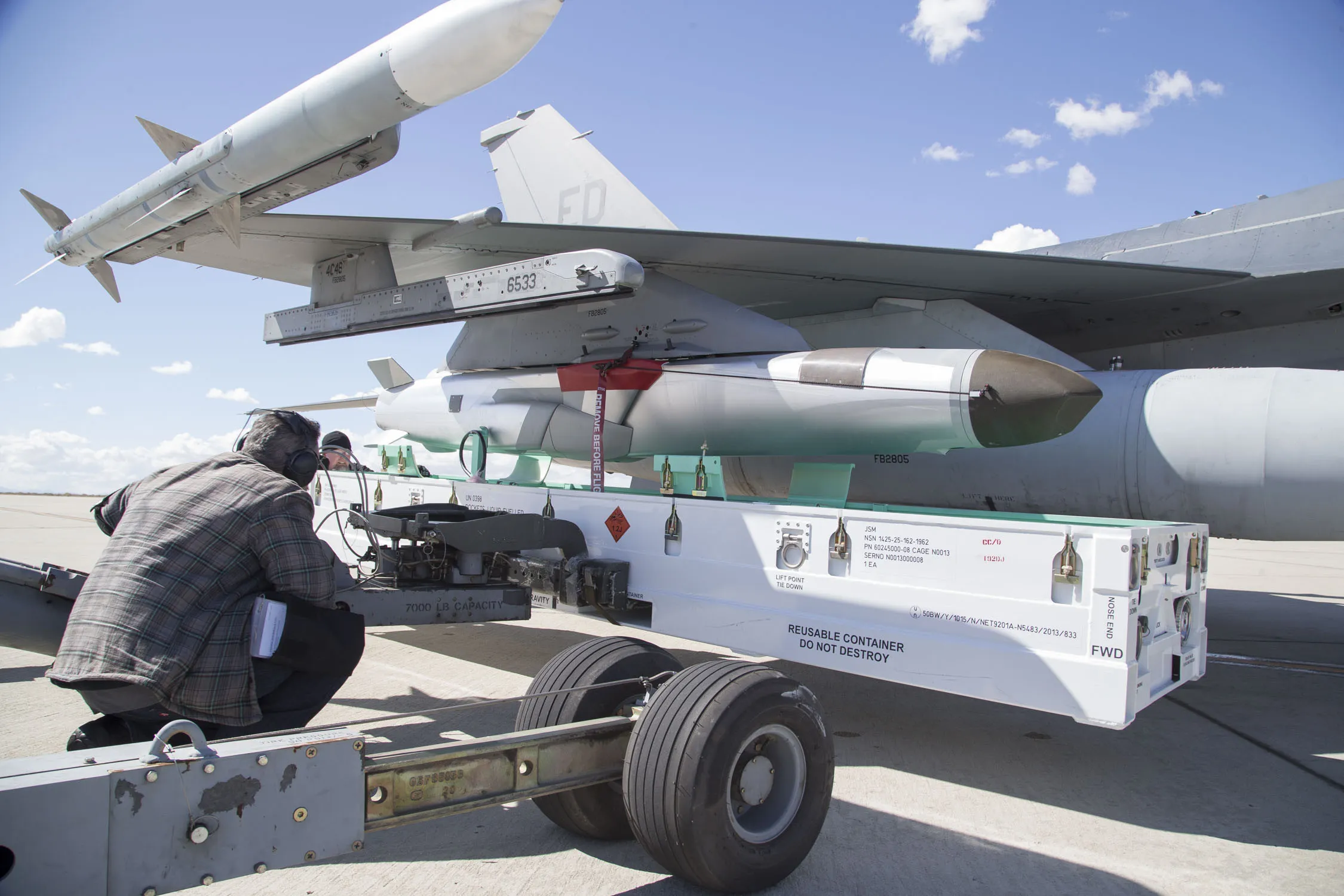
The Air Force is somewhat late to the JSM party, with Japan and Finland, in addition to Norway, having announced plans to arm the F-35As with these missiles.
It is not immediately clear when the Air Force expects to reach initial operational capability with the JSM on the F-35A, which is the only platform it currently says it plans to use the missile on. It’s unclear whether the full integration of the weapon is at all tied to the much-delayed Block 4 upgrade package for the Joint Strike Fighter. The Block 4 improvements have been described in the past as being key to enabling the addition of an array of new weaponry to the F-35’s arsenal.
The Air Force has also previously said that buying JSMs is a “bridge” to the planned future integration of the larger AGM-158C Long-Range Anti-Ship Missile (LRASM) onto the F-35A. However, LRASM cannot be carried internally by any F-35 variant and the JSM also offers land attack capability that the bigger missile lacks. Versions of the AGM-158 Joint Air-to-Surface Standoff Missile (JASSM) land attack cruise missile, from which LRASM is derived, are also set to be integrated onto U.S. Joint Strike Fighters in the future. Existing and currently planned JASSM variants also will not fit in the internal weapons bays on the F-35 and are not capable of engaging ships.

There might be the potential for the Air Force might integrate the JSM onto other aircraft beyond the F-35A. Testing of JSM on F-16 has already occurred and the missile’s relatively small size could open up other integration possibilities. General Atomics has independently presented JSM as a potential armament option for its MQ-9 Reaper series, which could offer a way to help ensure the relevance of those non-stealthy drones in future high-end conflicts.
Though currently an Air Force-only effort within the U.S. military, JSM could be attractive to the Navy and Marines force use on the F-35 and the F/A-18E/F as well.
Whatever the future might ultimately hold for the JSM, the U.S. Air Force now moved ahead to begin buying these weapons for use on its F-35As, which will give those jets valuable new stand-off strike capabilities, especially in the maritime domain.
Contact the author: joe@twz.com
